“They’ve got a sound that the world is gonna love. The world.”
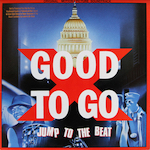 For many years I was aware that there was an old ‘80s movie released on VHS called SHORT FUSE starring Art Garfunkel. Because of that tough sounding title I figured it was some kind of WALKING TALL or DEATH WISH type shit where Art Garfunkel had a short fuse and some motherfucker made the mistake of lighting it. And then Art Garfunkel went off faster than expected on account of his fuse’s shortness.
For many years I was aware that there was an old ‘80s movie released on VHS called SHORT FUSE starring Art Garfunkel. Because of that tough sounding title I figured it was some kind of WALKING TALL or DEATH WISH type shit where Art Garfunkel had a short fuse and some motherfucker made the mistake of lighting it. And then Art Garfunkel went off faster than expected on account of his fuse’s shortness.
Then Mr. Subtlety told me I should check out this movie called GOOD TO GO “a deliberate attempt to make a Go-Go version of THE HARDER THEY COME, with a bunch of local artists playing themselves,” which he noted was called SHORT FUSE on video and had Garfunkel in it. He knew I was into funk, and go-go is a related subgenre I could theoretically be into.
I was intrigued, but then kinda forgot about it until I was record shopping and bought the GOOD TO GO soundtrack because it was cheap and had Trouble Funk and Chuck Brown and the Soul Searchers on it. And then I saw Art Garfunkel on the back and could tell from the picture that this was a guy with a really short fuse.
I don’t know much about go-go, but here’s what I can tell you. It’s a specific style of funk developed in the DC, apparently starting in the late ‘60s, but the form of it I know is very ‘80s. It’s kinda stripped down, heavy on bongos, cowbell and other percussion, and based around chants and call and response. “Da Butt” by EU (composed specifically for Spike Lee’s SCHOOL DAZE) is the most widely known go-go song I’m aware of. (Wikipedia says that DJ Kool’s “Let Me Clear My Throat” is “go-go’s last certifiable hit single,” but I honestly can’t tell how it’s not just hip hop. The go-go songs I know don’t have rapping over popular hip hop samples, they have guys singing like Cameo and chanting over a band. So maybe someone could explain that to me.)
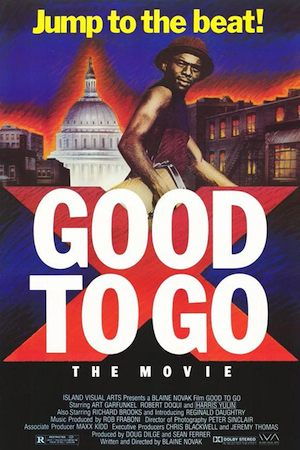 There was a time when many were convinced DC’s locally beloved go-go scene was going to blow up nationally like hip hop and breakdancing had, but instead it stayed mostly regional. GOOD TO GO / SHORT FUSE is a strange relic of that belief that this was the next big thing. I don’t know if it’s trying to be the WILD STYLE, the BEAT STREET, the BREAKIN’ or the LAMBADA of this scene. Maybe the GLEAMING THE CUBE, because it tries to use the scene as background for a crime story. Unfortunately neither the go-go part or the crime part feel like a fully formed movie, and then they’re just sorta haphazardly smooshed together.
There was a time when many were convinced DC’s locally beloved go-go scene was going to blow up nationally like hip hop and breakdancing had, but instead it stayed mostly regional. GOOD TO GO / SHORT FUSE is a strange relic of that belief that this was the next big thing. I don’t know if it’s trying to be the WILD STYLE, the BEAT STREET, the BREAKIN’ or the LAMBADA of this scene. Maybe the GLEAMING THE CUBE, because it tries to use the scene as background for a crime story. Unfortunately neither the go-go part or the crime part feel like a fully formed movie, and then they’re just sorta haphazardly smooshed together.
What’s cool about it is seeing these bands performing in medium sized clubs. It really shows the infectiousness of the music, which is lucky because there’s a surprising amount of performance footage before there’s any indication of what the story is or who the characters are. The first scene is about a young guy with bongos named Little Beats (Reginald Daughtry) being pushed up against a wall and robbed by his adult older brother (Richard Brooks, TEEN WOLF, THE HIDDEN, SHOCKER, THE SUBSTITUTE, THE CROW: CITY OF ANGELS), whose denim vest painted with “CHEMIST” because he was once a promising chemistry student but now just gets high and stealing. Little Beats ends up playing with a band called Redd and the Brothers, while Chemist hangs out with a mob of rampaging junkies led by Fab 5 Freddy as “Mr. Ain’t.”
Let’s discuss “Fab 5 Freddy” Brathwaite, icon of hip hop and New York City culture. I knew him, of course, as the host of Yo! MTV Raps, the original weekend version. He seemed like this cool hipster everybody knew, but it wasn’t until I was a little older that I saw WILD STYLE and learned his background. He was one of the NYC graffiti artists who broke through to the downtown gallery scene. He was friends with Jean-Michel Basquiat, and appeared in DOWNTOWN 81 with him. He hung out with Andy Warhol and young Madonna. He was in the video for (and namedropped in) Blondie’s “Rapture.” He co-starred in/co-produced WILD STYLE and composed the classic (and sampled by Nas) soundtrack. Another one of his songs, “Change the Beat,” has provided one of the most used samples in hip hop history: Freddy saying “fresh” through a vocoder, first scratched by Grand Mixer DXT on Herbie Hancock’s “Rockit” and according to Whosampled.com used on over 750 songs since.
In ’88 he became the first host of Yo! and he also started directing music videos. Some of his classics include “My Philosophy” by Boogie Down Productions, “Talkin’ All That Jazz” by Stetsasonic, “Strictly Business” by EPMD, “Ladies First” by Queen Latifah featuring Monie Love, “What’s My Name?” by Snoop Doggy Dogg and “One Love” by Nas.
But skip back to ’86. This was the year he had a cameo in SHE’S GOTTA HAVE IT as a guy telling Nola Darling “Look baby, let’s go to my house right now, let’s do the wild thing, I mean let’s get loose!” But it’s so weird to see him playing a scary criminal. That was a normal thing for Ice-T, Ice Cube, Snoop, Method Man, etc. to do, but Fab 5 always had such a different vibe as the guy who impossibly cool in a way that is before your time and yet perpetually not out of style. A guy who can wear flashy clothes and use slang you never heard before and make you feel like only he’s allowed to use it. A guy who could be friends with a rap crew and a gallery owner and a punk band and if you ever saw him not wearing a hat and sunglasses you would worry about him.
So I know there’s such a thing as acting but to me this guy is such an icon I have a hard time accepting him as a giggling psycho leading a mob of scary dudes through dark alleys, smoking PCP joints, snatching a guy’s chain, randomly knocking over innocent Hare Krishnas, pulling a guy out of his car and stealing it for a drive-by. Unfortunately Mr. Ain’t and friends gang rape and kill a nurse on her way home from a night shift, in an alley near a go-go club just called The Go-Go.
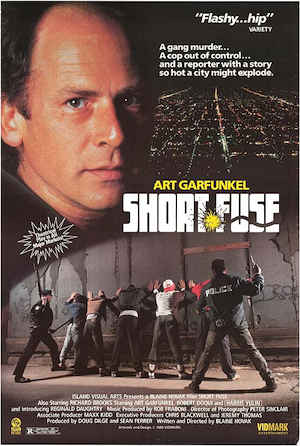 Garfunkel plays S.D. Blass, a newspaper reporter who hears about the crime from a police department connection Detective Harrigan (Harris Yulin, CUTTHROAT ISLAND) and writes an article about it with the inaccurate headline “Nurse Murdered at Go-Go” and subhead “Music and Drugs Blamed For Violence.”
Garfunkel plays S.D. Blass, a newspaper reporter who hears about the crime from a police department connection Detective Harrigan (Harris Yulin, CUTTHROAT ISLAND) and writes an article about it with the inaccurate headline “Nurse Murdered at Go-Go” and subhead “Music and Drugs Blamed For Violence.”
This is big trouble for Max (Robert Doqui, UP TIGHT!, MY SCIENCE PROJECT, ROBOCOP, MIRACLE MILE) of Maxx Saxx Entertainment. He manages the top go-go bands and has been trying to convince bigshot L.A. record producer Gil Colton (Michael White, BEST SELLER) to give them record contracts and take the scene national. Alot of the performance footage is when Max brings Colton to watch the bands, and he likes what he sees, but worries about the Music and Drugs Blamed For Violence.
Although Chemist did not kill the nurse, Detective Harrigan blames him for it and arrests Little Beats to try to get information about him. Eventually Blass figures out that his boy Harrigan is a racist liar, feels bad about all the hell he brought down on this music scene and knows he has to expose the truth. So he talks with Little Beats and his mom (Hattie Winston, The Electric Company, Rugrats, TRUE CRIME) to try to be a good white ally. None of this is very developed at all. The movie ends with a TV reporter covering the exoneration of Chemist and concluding, “For tonight at least, S.D. Blass is a hero in the Black community.”
The soundtrack features five songs by Trouble Funk (including the title song and its reprise), one by Hot Cold Sweat, one by E.U., one by Chuck Brown & the Soul Searchers, one by Redd & the Boys. There’s also some Jamaican dance hall/reggae stuff on there, like the theme song for Mr. Aint’s “Wrecking Crew” gang is by Sly & Robbie. The album was released by 4th & B’way. It was produced by Maxx Kidd, also associate producer of the movie, and presumably the basis for the Max character. He had a record label called T.T.E.D., which stood for “Tolerance, Trust, Eternal dedication, and Determination” – nicer than Maxx Saxx Entertainment, but less catchy. Among other things, he was a producer and manager for Trouble Funk and Chuck Brown, and was trying to bring that scene to national or worldwide prominence through this movie and soundtrack. Maybe if the movie was more fun it would’ve worked – I don’t know.
GOOD TO GO is written and directed by Blaine Novak, who otherwise has just directed a few music videos, but he co-wrote Peter Bogdanovich’s THEY ALL LAUGHED (1981), plus STRANGER’S KISS (1983) and later BLUE CHAMPAGNE (1992) starring Diane Ladd. And he appeared in UP THE CREEK (1984) as an actor.
According to IMDb, Anjelica Huston is in the movie as “Charlemaigne,” but I must’ve missed that. To tell you the truth I forgot most of this movie instantly, so I couldn’t really tell you what this means, but in my small page of notes I wrote, “White people making out in car – crash and flip.” So that might’ve been a good part. This is definitely not a thrilling movie, but it at least is an interesting artifact of music history (and Fab 5 Freddy), so somebody (maybe some guardian of DC history) really oughta remaster it for a high def format. I mean I’d rather see TOUGHER THAN LEATHER first, but might as well do this one too.



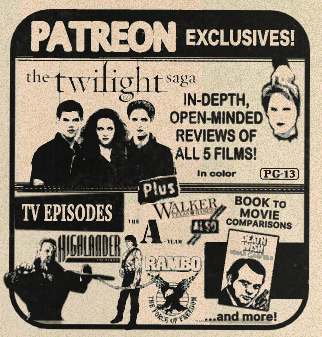
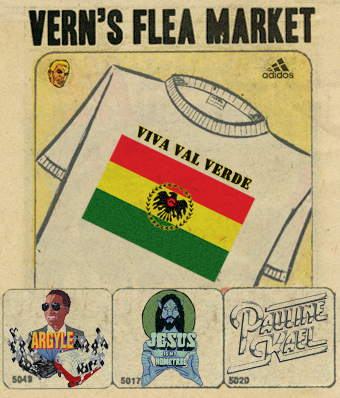
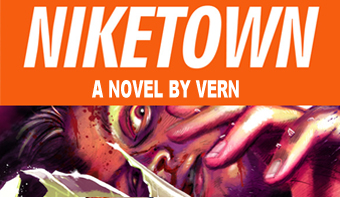
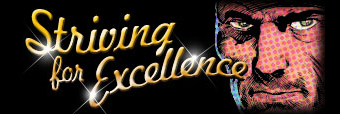
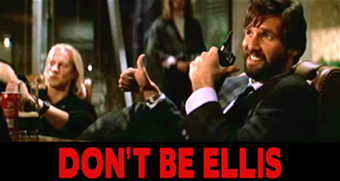
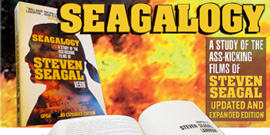
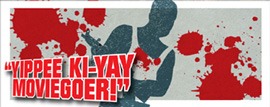








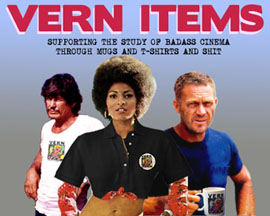
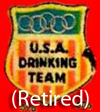
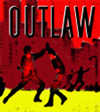







December 7th, 2021 at 9:14 am
Saw Trouble Funk at Glastonbury in 1987 when they were still a coming thing. I remember feeling that whatever they were selling was wasted on me, as they were having a much better time than I was, but a muddy field of punks and hippies may not have been the best place to’ve seen them. But by way of comparison, Husker Du, and The Bhundu Boys also played that year and, for me at least, had no problems overcoming the limitations of the setting. Then somewhere I acquired a copy of Trouble Funk’s live London album, Say What!, and while I played it a fair bit at the time, I never felt the need to get another of their albums. I suspect this is why Go-Go never crossed over; live in the right setting you could really get into it, but it absolutely needed that setting.
I watched GOOD TO GO on Youtube – it’s still there – a few years back, for old time’s sake, and what I really took from it was that Art Garfunkel had absolutely no vanity about his hair. I’d say it’s probably his second best movie after CATCH-22, even if he did get more praise for CARNAL KNOWLEDGE than for either of them.